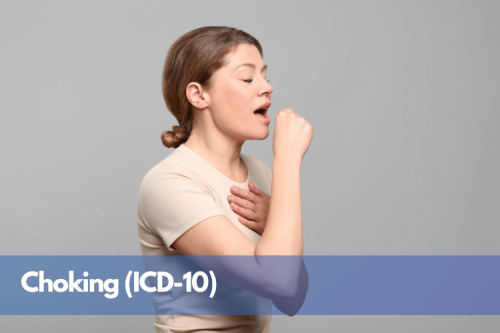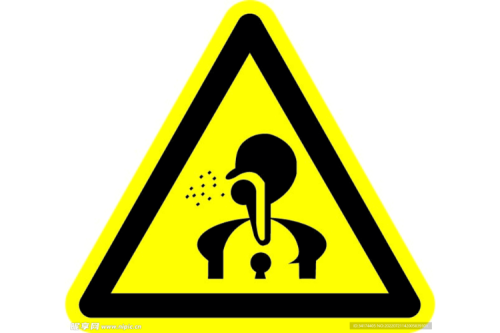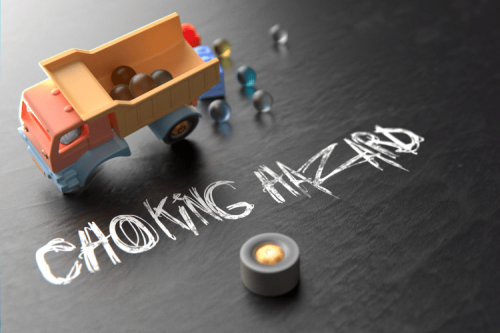
When starting your baby on solids, knowing the difference between gagging and choking is essential for your child’s safety and yours as well. Intentional gagging is a funny image: whines the same as child-led weaning (BLW) encourages children to explore self-feeding, which has its fair share of disadvantages, like risks to the child’s safety. This paper aims to explain the mechanism of gag and its role in eating from a physiological perspective, setting apart true and false choking and what to do during an actual case of choking. By the end of this article, you will understand these concepts more thoroughly and know the best practices to promote safe and effective feeds for your child.
What Is the Difference Between Gagging and Choking?

Gagging and choking are differentiated in terms of their reactions and the relevance of their functions. Gagging is a protective reflex that pushes food or objects away from the pharynx to avoid choking. That’s why children use gag as a normal response during their early feeding due to the various sizes and textures of the food. In contrast, choking occurs due to some obstruction, whether partial or complete, in the airway, and this prevents normal respiration. Gagging is marked by loud coughs and finger gaggers, unlike choking, which may be silent and cause difficulty breathing. The affected person has a never-ending urge to talk, and his skin and lips color bluish. For this reason, it is essential to differentiate between the two situations because recognition of the features of each particular state is crucial in beginning an appropriate response.
Understanding the Gag Reflex
The gag reflex is an automatic reaction aimed at preventing the entrance of air obstructions into the airway. I have understood that this reflex is activated whenever the back of the throat, tongue, and palate are stimulated. It is an involuntary reaction most accentuated when infants and toddlers familiarize themselves with swallowing food. On the contrary, choking is a solid sound and shaking of the body, which is, in fact, a relief that restricts some parts of the throat from moving further away, provoking cough and/or gag sounds. This knowledge gives me peace of mind that gags are part of the process of eating and have minimal consequences, whereas choking is a potentially life-threatening condition and requires instant attention.
Signs Your Baby Is Choking
Detecting signs of choking among children is crucial since prompt action can prevent death. Gagging is different from choking in that the latter is an event that has the potential to be life-threatening and occurs without any sounds. Here are some key ways to tell that your baby is choking:
- Noisy or Quiet Struggle: Noisy crying or coughing could mean a sign that the airway is blocked.
- Breathing Difficulty: Extreme breathing difficulty, neck stretching, or the absence of any chest movement is a clear sign that the person has an obstruction.
- Blues or Deep Reds: Skin, especially around the mouth, chin, or upper cheeks, experiencing bluish shades could signify a lack or complete absence of air.
- Weak Cough: On occasions, the airways may have very little or no air supply, causing a person to experience a weak coughing effect.
- Crying out Loud or Fretting: A child could squint while forcing air through the obstruction, indicating discomfort.
If you observe these signs, begin infant-specific choking first aid, including back blows and chest thrusts, while immediately dialing the emergency services in case the object does not dislodge quickly. Always ensure that caregivers know how to do pediatric CPR and how to react to a choking emergency.
How to Tell the Difference: Choking vs. Gagging in Baby-Led Weaning
I tend to watch the baby's behavior and physical signs when trying to differentiate between choking and gagging when practicing baby-led weaning. In most cases, gagging involves a cough, some gagging sounds and a red face, however the baby can still breathe, vocalize and self-suffocate without intervention, which is a very vital technique for self-knowing when that baby is in danger of choking itself. Choking, however, is more dangerous as it can be defined as the partial or complete blockage of the respiratory passage, which inhibits the process of breathing and can only allow a silent struggle until the person turns blue. These hypoxic situations tend to require urgent care and a lot of immediate action.
Choking must be addressed immediately; every second counts when dealing with this condition. Start by placing the infant, “with their face down,” in the slighter downward position, and then give them average back blows or chest thrusts. If all else fails, seeking medical assistance is key. Knowing the difference between choking and gagging is key, as is comprehension. These are the crucial aspects of a quick help response for a baby.
Is Gagging Normal During Baby-Led Weaning?

Indeed, gagging is entirely safe during baby-led weaning and is a form of reflex protection. When a baby uses a spoon for the first time, it pushes food forward to prevent choking. This reflex is uncomfortable for babies who cannot move properly and tends to decrease as the baby develops improved oral control. Although gagging may look unpleasant, it is a part of the modification process, so it is common, and only sterilization is needed till it worsens into choking. Watching and remaining passive during the gagging episode is crucial to prevent scaring the child and make the feeding experience better.
Why Babies Gag on Solid Foods
The reflex that assists babies in swallowing solid foods is closer to the forefront of their mouths as they grow up. This reaction serves as a defense mechanism to assist in choking by forcing the foreign textures or bulk pieces of food away from the airways. Likewise, I consider gagging part of a learning process where babies acquire the coordination and motor abilities to work towards chewing and swallowing. Gagging is always there, but it’s not fatal, and more importantly, such instances lessen as your baby’s interaction with food increases. As such, ensure that meals are monitored and prepared in small, digestible portions.
The Role of Gagging in Learning to Eat
Gagging is an integral step in a child's development towards feeding him or herself independently. The positioning and location of the gag reflex encourage a baby to breathe through his mouth while exploring novel textures and aid in developing the oral motor skills necessary for manipulating solid foods. Research shows that the neural pattern of recurrent events where the baby gags enhances chewing and swallowing activity, increasing oral coordination over time.
More technically, the gag reflex is caused by stimulation of the oropharyngeal sensory nerves, especially the glossopharyngeal nerve glo (cranial nerve IX) and vagus X cerebral nerve. It is clinically noted that all children have this reflex along the sucking phase. Still, for children, when reaching 6 months, its reflex moves increasingly deeper towards the pharynx and, therefore, is stimulated less often when food is introduced. It is important to note that during this phase, a sound diet is essential to prevent gagging, and engaging in several practices, such as cutting food into 0.5-inch pieces and thin slices, is recommended. Because babies will be exposed to various new foods and textures rather than only one food, their gag reflex will reduce intensity while their oral performance will strengthen.
If gagging becomes a common occurrence, the parents or other individuals must control the gag reflex by not reacting or acting too urgently until the baby starts choking.
Choking is linked to signs like backing away, not being able to produce sound, or turning blue, in which case measures such as back thumping or cardiopulmonary resuscitation must be taken. When put in this context, it gags; Rather, it is a necessary and non-threatening aspect of the normal development of the skills required to establish healthy and confident eating habits.
When to Be Concerned About Gagging
Gagging may be unpleasant, but it is a natural reflex associated with learning to eat. I believe that one should worry when the gag reflex is prolonged, excessive, or associated with other conditions such as vomiting, reduced appetite, and trouble swallowing. Furthermore, if a child seems to avoid textural changes of age-appropriate solids or completely avoids non-pureed food, it may signal structural or functional speech-related issues.
Another study interprets this disturbance as a shift towards how many waves one has already crossed, including age norms, chewing, and finger foods eaten, ranging from 8 months to 12 months. In case your infant is unable to achieve these milestones or is losing mass, it may be therapy-resistant, i.e., advancement to strategies like therapy may be needed. Further, any child who seems to faint or choke (silent or with clear sounds) during meals should have an exam, which would rule out breathing or physical barriers to a normal swallowing response.
How Can You Help Prevent Choking?

A choking hazard may be avoided with a good combination of safe food techniques, supervision, and encouragement for the child to have the necessary eating skills for their age. However, firstly, parents are to make sure that all kinds of foods given to a child are suitable for the child's growth stage. For instance:
- Babies ( 6-12 months ) can have a piece of banana or a steamed vegetable no more than a quarter inch in diameter to avoid choking. Feeding them squashed soft food will also do.
- Young kids ( 1-3 years ) can have multiple hot dogs and grape and cherry tomatoes in accordance with their age, and a vertically placed hot dog can reduce choking by as much as fourfold.
- For Kids ( 3-5 years ), while avoiding heavy foods such as popcorn, hard candies, and whole nuts, encourage them to have good chewing skills and practice them.
While assisting the kids at mealtime, do not let them talk, run, or play with anything. Try to instill eating with a specific posture in them to avoid any interruptions. Last but not least, instilling focus and making your child wait after each mouthful for the child to break down the food into small pieces by chewing is crucial.
In certain cases, it’s important also to keep track of two technical parameters:
- Foods for toddlers can be measured at not more than half an inch in size so that the child does not have difficulty chewing.
- Children grow differently, and so the ability to chew and swallow food will develop depending on age.
It's crucial for a healthcare professional such as a Speech-language pathologist to monitor a child if such risk factors are known because children have oral-motor delays or find swallowing hard. Moreover, a child can also be secured further through an individualized feeding plan specifically made for him/her.
Identifying Choking Hazards in Baby Food
How to identify potential choking hazards in baby food: I begin by determining if foods are suited to three factors: the size, texture, and my baby's development stage. I steer clear from whole grapes, significant bits of meat, or peanut butter, as they are all complex, round, or sticky and can cause choking. Instead, I supervise my baby while eating and chewing small pieces shaped smaller than a quarter inch, which is cut. I also ensure I wait for appropriate readiness signs when my baby can sit up straight and has proper muscle coordination for chewing and swallowing. My baby is constantly monitored while eating to eliminate any potential chances of choking.
Preparing Foods to Reduce Choking Risks
To make the food for my baby less likely to cause choking, I have strategies to ensure the food is safe and suitable for my baby’s feeding stage. I steam or cook hard vegetables like carrots and broccoli until they are mashable with the fork. Also, fruits are peeled off and chopped into small bits or mashed up a bit; for instance, bananas can be thinly sliced or smashed. I serve meats in tiny pieces, ground meats, or put together with the other ingredients in a puree. I strive not to put sugar or salt, which means natural appeal and textures remain simple and safe for my baby. Based on my observation, finger foods should be incredibly soft, smaller than an airway for an infant, or puffed cereal that dissolves in water and should not have a thickness of more than a quarter. All food is freshly made in proportions. I remain actively engaged during all meals to avert and respond to any threats to my baby.
Teaching Your Baby to Chew and Move Food
To help my baby learn to chew and move food around in their mouth, first, I choose a high chair so that they can maintain a proper postural position while chewing. First, I provide appropriately sized, easily graspable, and easy-to-drink chunks of food such as steamed vegetables, ripe fruits, or soft bread. Giving these chunks to my baby and letting him feed himself encourages him to bite and chew on the food. I began eating and exaggerated the movement of my jaw while chewing so my baby could observe and mimic the action since babies learn a lot through observation. Also, I gradually introduce food of varying textures to my baby to strengthen his oral motor skills and accustom him to handling food with differing consistencies. I am conscious of my role during this process, as it requires time, effort, and, more importantly, patience. And the best part is I am around to supervise and ensure the meals are pleasant.
What Should You Do If Your Baby Is Choking?

First and foremost, you must control yourself. Having a baby in distress can be one of the most alarming situations. If the baby can cough, let them be, if not monitor the baby's condition. If the baby cannot expel air from their lung, check if they can cry or cough; if no, then proceed to p. Usually, you would need to place the baby on the arm (holding support to head around throat) and administer five strong back slaps using the talon of your hand on the buttocks area. After the five back supports, roll the baby to its back and use two hands on the baby’s chest (just about the point below the nipple) to pull the baby up for five more coughs. If any steps don’t work, initiating the same thrusts mentioned above will be your only way. If an iota of the baby’s air passage is blocked or the baby loses consciousness, it is recommended that you reach out for medical assistance straight away. The seriousness of the matter means no activity not involving any such incidents is acceptable.
Performing First Aid: Back Blows and Chest Thrusts
To perform back blows and chest thrusts effectively, ensure that the baby's airway obstruction is addressed promptly and accurately. Follow these steps:
- Back Blows:
- Positioning: Place the baby face-down along your forearm, ensuring its head is lower than its chest. Securely support the baby's head and neck with your hand.
- Technique: Using the heel of your other hand, give up to five firm back blows directly between the baby's shoulder blades.
- Key Parameter: Each blow should be deliberate and strong enough to dislodge the obstruction without excessive force that could cause injury.
- Chest Thrusts:
- Positioning: Turn the baby face up and lay it on a stable surface or along your forearm, ensuring its head is below its chest. Use your free hand to support the baby's head.
- Technique: Place two fingers on the center of the baby's chest, just below the nipple line. Apply five quick thrusts downward, compressing the chest about 1.5 inches (approximately 4 cm).
- Key Parameter: Compress at a steady rhythm, maintaining controlled pressure. Avoid excessive force to prevent rib or internal injuries.
- Alternating Steps:
- If the airway remains obstructed, alternate between back blows and chest thrusts, and monitor the baby's condition closely.
- Call emergency services if the blockage persists after repeated attempts or if the baby becomes unresponsive.
These procedures are designed specifically for infants under one year of age. Always follow up with a healthcare professional after performing first aid for choking to ensure no further complications.
Steps to Clear the Airway
The first thing I do when dealing with a choking child is to ascertain the airway blockage quickly. Then, I'd initiate the following actions to perform the procedure. In my view, the five backrubs instruction must first be delivered, with the first five firmly delivered to the back of the chest, between the shoulder blades, while ensuring the infant's head is stabilized and below the chest level. If the obstruction does not resolve, I would carry out five chest thrusts as previously outlined. These methods should be performed in succession while observing the baby closely. If the blockage continues or the infant becomes unconscious, I would summon an emergency call and carry out CPR while waiting for the doctors.
When to Seek Emergency Help
For a newborn, drowning can be fatal in a matter of moments. I would want immediate emergency treatment if the infant is not responding or I am unable to dislodge the obstruction after trying numerous times. Moreover, in the case that the newborn has a blue skin color, gasping, or to the worst point not being able to ‘cry’ or ‘cough’ then the baby would be concerned seeing that they are in severe distress, I would call for an ambulance. While the professionals on call were coming, I continuously changed chest thrusts and back blows. Then, if any other step is not working besides the baby not breathing, use CPR. Administration parameters suggest that 2-finger chest compressions at a depth of 1.5 inches should be given at 100-120 compressions every minute and two gentle breaths after 30 compressions. It is essential to take those steps while the professional help is on its way to ensure oxygen supply.
How Does Weaning Affect Gagging and Choking?

Complimentary foods are incorporated into a child's diet who has been exclusively breastfed for the first six months. With this development, the chances of a child gagging as they explore various sizes and textures of foods increase. For most of the time, gagging is a normal response where food is propelled from the back of the throat to the mouth to prevent choking. But if chomping has a more dire threat, choking, which occurs when someone's airway is blocked, has potential. Considering the risks, it is advisable to avoid foods such as dry nuts and whole grapes by chopping them into more manageable bits. Furthermore, Starting with plain food helps a child learn how to chew gross food, which will curb the difficulties choking might bring in the future. During this process, at least one individual should supervise the feeding so that if something requires assistance, someone is available to handle it.
The Weaning Journey: Baby Starts Solids
Gradually introducing solid food while weaning is crucial to ensure safety and proper growth. Some of the critical questions are:
- How To Handle Trouble With Gagging During Weaning?
- Gagging is a natural reflex that many infants struggle with. This, however, can be dealt with by placing the infant seated, as this allows them to breathe while consuming softer food that can be chewed. Slowly introducing new food textures will allow the infant to adapt over time and create a food fix.
- How Do We Choking Hazard Tips?
- Before Feeding the Baby
- To address this concern, infants and children should not be served solid foods bigger than half of their thumb. Moreover, gouging should be avoided, and such foods should also not be given to children.
- Even certain vegetables, meat, and chicken should be tenderized so that they are easier to swallow.
- Parental Oversight Procedures
- Having a child or a baby who sucks up bottles, too, is not okay when it lacks supervision.
- That also goes on to say that if the infant is too much on one side, kissing the buttocks, it's not abiding by eating standards, as such also means that the baby tends to choke easily.
3.Important Tips and Precautions:
- The universal recommendation is to wait around six months for babies to have meat or food that is tough. as no one can be assured of the extent to which a child will choke or not that has a tendency to throw their tongues.
- Moderation is Key. The same goes for how babies are supposed to start eating. Perceptions of how they should do vary, but usually, it should be 1-2 tablespoons per food type.
- There is a certain procedure that should be followed based on their growth. Some say chewing food comes first, followed by heavily mashed food, and lastly, finely chopped.
Thus, solid intake becomes much easier when these rules are followed thoroughly, keeping the overall growth of the baby in mind.
How Baby-Led Weaning Influences Gagging
Gagging in infanthood and the process of baby-led weaning are related since, at the end of it all, gagging is a reflex that develops with time. At the same time, BLW supports a child in learning specific oral skills. Gagging during infancy is common as babies start learning how to handle solids, and in turn, this reflex helps prevent the child from choking. According to well-done studies, baby-led weaning enhances the child’s ability to explore and work with different solids and chew and swallow without being forced to rely purely on purees. Such exposure over time builds on the ability of the tongue to coordinate movements with swallowing while reducing gagging sensitivity over time.
Technical Parameters:
- Gag Reflex Zone—For babies, it is generally assumed to be around the mid-tongue center and, over time, pushes back to the rear of the tongue.
- Food Size and Shape—There must be 2-3 inches of finger-sized pieces that are soft enough for babies to hold but still require chewing.
- Supervised Environment—At mealtimes, at least one adult must be present, while babies must sit up at a 90° angle, which reduces the risk of choking.
- Timing – Suitable for infants over 6 months of age who can self-sustain with food in a sitting position.
Adapting as Your Baby Gets Older
Each stage of your baby’s development comes with varying requirements which as a parent you will need to assimilate with and the key to doing this is awareness, I’ve come to the understanding that as my baby grows, some routines, which to me, were effective previously may have to change. An example might be their napping hours or even the napping, as children usually have multiple transitions to only some during the day. As they stop consuming solely breast milk or formula and begin taking solids, nutrition becomes more difficult. I also ensure that I pay attention to certain milestones, like crawling and walking, that make it necessary for specific safety changes in the house. These changes are vital for my baby’s physical and overall development.
References
Choking Pharyngeal reflex InfantFrequently Asked Questions (FAQ)
Q: What is the difference between gagging and baby choking?
A: Gagging is a protective mechanism that helps prevent choking by pushing food forward when a baby is learning to eat. Choking, on the other hand, occurs when a piece of food blocks the airway, which is a medical emergency. Knowing the signs of choking is crucial to ensure your baby's safety.Q: How can I tell the difference between gagging and baby choking?
A: When a baby is gagging, they may cough, make noises, and their face might turn red, but they can still breathe. In contrast, if a baby is choking, they may be silent, unable to cry or cough, and their face might turn blue. It's essential to learn these signs so you can respond appropriately.Q: Why does my baby gag when starting baby-led weaning?
A: Gagging is a natural reflex that helps protect your baby from choking. When starting baby-led weaning, your baby is learning to move food around their mouth, and the gag reflex helps them manage the food safely.Q: What foods are a choking hazard for babies?
A: Foods that are hard, round, or sticky, such as nuts, grapes, and chunks of meat, are common choking hazards. Ensure your baby’s food is soft and cut into appropriate sizes to help prevent choking.Q: How can I help my baby gag less during meals?
A: To help your baby gag less, offer foods that are soft and easy to mash. Encourage them to take small bites of food and let them practice moving food around their mouth. This will help them develop the skills to chew and swallow effectively.Q: Is it normal for my baby to gag on food often?
A: Yes, gagging is a normal part of learning to eat, especially during the early stages of baby-led weaning. As your baby becomes more experienced with eating, they will likely gag less.Q: What should I do if my baby is choking?
A: If your baby is choking, acting quickly is essential. Call emergency services and perform baby first aid, using back blows and chest thrusts to help remove the blockage. Never leave your baby alone during meals; consider taking a baby first aid course to be prepared.Q: Can a baby choke on too much food at once?
A: A baby can choke if they try to swallow too much food at once. Encourage your baby to take small bites and chew thoroughly to reduce the risk of choking.Q: How does the gag reflex help protect my baby from choking?
A: The gag reflex helps prevent choking by triggering a response to push food forward when it gets too close to the throat. Babies' reflexes are more sensitive, so they might gag more frequently as they learn to eat solid foods.Q: Should I be worried if my baby continues to gag frequently?
A: While gagging is normal, consult a pediatrician if your baby continues to gag frequently and seems excessive. They can assess any underlying issues and guide how to help your baby.







 Login with Google
Login with Google Login with Facebook
Login with Facebook